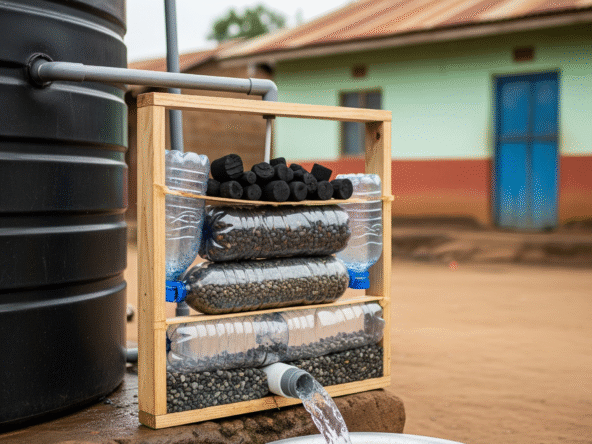As water reliability continues to fluctuate across Kenya especially in satellite towns like Ruai, Kiserian, Machakos, and along Kangundo Road more homeowners are embracing multi-tank linking systems as a practical solution. Whether you’re expanding storage for a rural home, upgrading your rental property, or managing water for a small farm, linking multiple tanks offers flexibility, scalability, and affordability compared to installing a single large tank.
In this article, we explore how to successfully link water tanks, common connection methods, fittings you’ll need, and where best to install your setup for optimal performance.
Why Link Water Tanks?
Instead of investing in a single 10,000L tank (which might be too large for your budget or space), many Kenyans are opting for modular options like:
- Two 5,000 litre water tanks
- Four 2,500 litre tanks
- Or even a staged mix of 1000 litre and 2000 litre tanks
This approach makes expansion easier—you can start small and scale gradually without replacing your entire setup. It’s particularly effective in areas with seasonal rainfall or unreliable municipal supply.
Not sure which brand to go for? Check out Top Water Tank Brands in Kenya for recommendations on trusted options like Techno Tank, Kentank, and Jojo.
Popular Multi-Tank Configurations
Depending on your needs, there are three primary ways to connect water tanks:
1. Series Connection
One tank fills up first; overflow then moves into the next tank. This works well for sites with uneven elevation or when managing water priority.
2. Parallel Connection
All tanks are connected at the base and fill simultaneously. Ideal for ensuring balanced water levels and faster delivery in high-demand settings.
3. Overflow-Only Setup
Only one tank is actively connected to the source. Once full, excess water overflows into the next. Common in basic rainwater harvesting setups—learn more in Rainwater Harvesting in Kenya.
Fittings and Materials You’ll Need
A durable and leak-proof multi-tank system relies on the right parts:
- Ball or gate valves for individual tank control
- 2-inch PVC or HDPE pipes for connecting tank outlets
- Elbows and T-joints to create efficient links
- Flexible connectors to prevent cracks from expansion/movement
- Tank stands (if using gravity-fed flow)
Want to integrate your water flow system into your outdoor design? Explore Integrating Outdoor Seating with Drainage for aesthetic ideas that also solve drainage challenges.
Best Placement for Multi-Tank Systems
To get the most out of your setup:
- Keep tanks at the same elevation for smooth pressure balance
- Position near gutters or downpipes if harvesting rainwater
- Consider underground tanks if space is tight or aesthetics matter
- Use narrow compound zones—like beside outdoor kitchens or fence lines
For creative use of compound edges and materials, see Mixing Timber and Stone in Compound Design.
Maintenance Tips for Linked Tanks
To keep things running smoothly:
- Inspect valves and joints monthly for leaks or debris
- Flush connector pipes every few months to avoid algae and sediment buildup
- Watch for airlocks a sign that pipes may need venting or re-leveling
- Ensure your overflow line leads to a well-designed soak pit—refer to Soak Pit Design for Residential Plots
Multi-tank linking systems offer a smart, budget-friendly path toward reliable water storage in Kenya. Whether you’re upgrading a plot in Kangundo, powering irrigation in Kisaju, or improving supply in a rental compound, linking 1000L, 2000L, or 5000L tanks provides flexibility while keeping your project scalable.
These systems also pair well with other infrastructure like rainwater harvesting, composting, and low-cost septic systems—ensuring your compound is sustainable and self-sufficient.
Read More:


